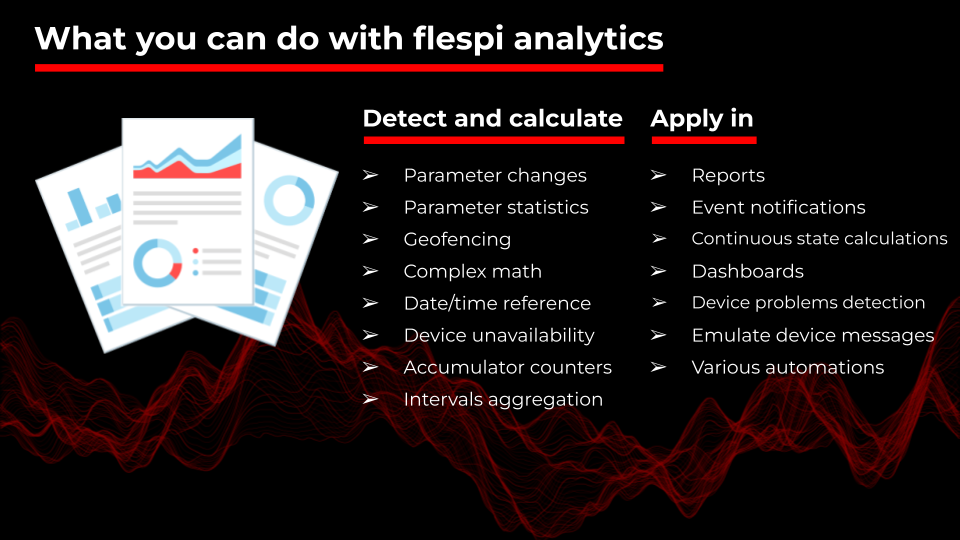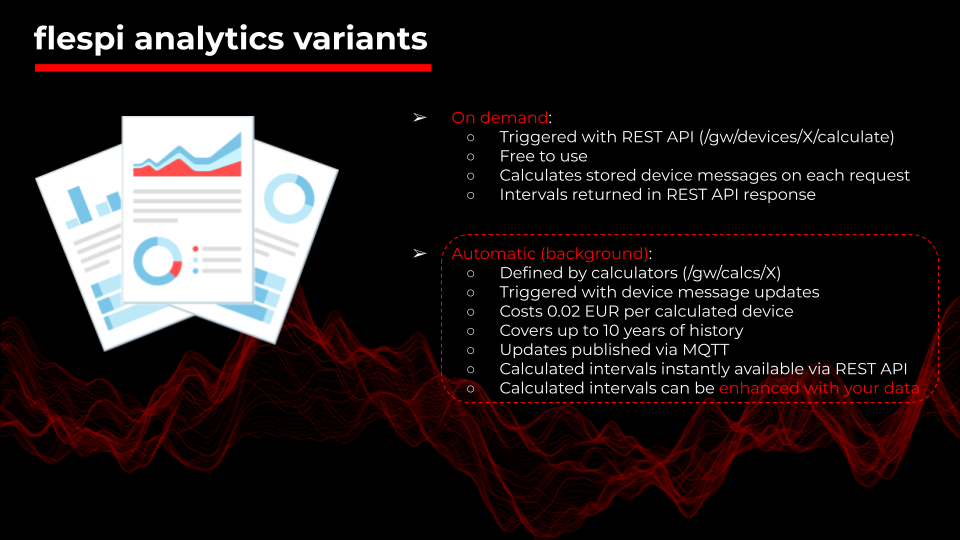In previous presentations, we discussed the main flespi entities and integration options. This time, let’s delve into reports and notifications and how you can track and analyze your messages’ flow.
Aggregating data isn't just a top priority for any telematics network; it's fundamental, as you need to use this data properly. When dealing with thousands of connected devices, stepping into the infinite flow can be overwhelming, making it easy to get lost. But not with flespi analytics.
Seamless data extraction and on-the-go calculations following specific patterns within a range – this is the mechanic you need to grasp to understand what's happening under the hood. Finding logic in correlations enables you to make informed decisions – I bet you won’t argue with that.
So, how does it work in basics? Even if you know a little about intervals selectors and counters, setting them up correctly can be challenging. Knowing that analytics might seem hazy and complex, we decided to eliminate uncertainty and shed light on some aspects worth your attention.
With analytics in flespi, you can not only detect and calculate a vast number of parameters, including their states, or check device availability. It’s the key to complex maths and clear statistics, helping you answer possible and impossible questions you might have on your roadmap. Also, you’re aware that processing massive data on your end can cost you thousands of dollars extra when hosted on a cloud provider, and here’s flespi as the perfect solution. Figuratively speaking, analytics is the Holy Grail to the cost and time efficiency of your business.
There are two variants of analytics: on-demand, triggered with REST for free calculations of device-stored messages, and automatic (background) analytics, defined by calculations and triggered with device message updates (it also allows you to receive updates published via MQTT).
These are two entities to make it simple: a calculator (your algorithm for calculation) and a calculated device. It may sound like a boast, but it’s true - we never encountered a problem that something couldn’t be calculated with our analytics engine. There are a lot of situations saying in simple language to detect a device outside a geo-zone or merge messages before the trip starts, and so forth, and so forth. You may not even be aware of using such counter types like accumulators, dataset, or specified calculators which are used to provide you with extreme freedom in calculations. Accessing intervals can be done through the REST API (e.g., intervals can be fetched from storage or you can attach your own fields to the stored interval).
I guess it's intriguing enough – watch the full video (here are some use cases that might pique your interest as well). Hope this overview will serve as a good starting point to explore the myriad of mathematical possibilities available through analytics. If you need any assistance - reach us in chat; we’re just a message
Next time, we'll discuss how to automate your processes with zero-scripting. Stay safe and stay tuned!

